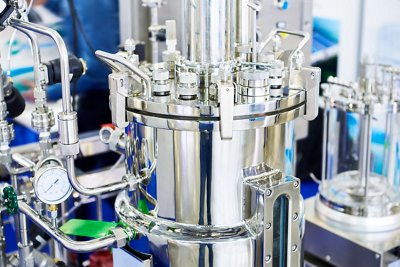Build Out Your Bioprocess Testing Workflow
September 26, 2022

Bioprocessing is a type of manufacturing that uses living cells to produce a product. In pharmaceutical bioprocessing, a living cell is manipulated to manufacture the drug of interest in bioreactors and is then purified and formulated to create the end product.
WHAT IS BIOPROCESSING?
According to the American Pharmaceutical Review, bioprocessing is any process that uses complete living cells or their components (e.g., bacteria, enzymes, proteins) to obtain a desired product. In fact, biofuels derived from algae and beer produced from yeasts are everyday examples of bioproduced products.
Pharmaceutical drugs produced by bioprocessing are often referred to as “biologics” and include recombinant therapeutic proteins such as insulin, some vaccines and monoclonal antibodies. Biologics are available for a broad range of diseases and have revolutionized treatment of inflammatory/autoimmune diseases, cancer and diabetes.
Despite their profound medical value, manufacturing of biologics is complex and manufacturers must carefully balance increasing product quality while facing cost pressures. This is especially the case as biosimilars, biobetters, and biogenerics increasingly enter the market. Manufacturers can spend years developing and fine-tuning their quality management systems to ensure product quality. In fact, mitigation of risk for issues such as microbial contamination is a never-ending pursuit. Similarly, monitoring the manufacturing process for contamination in an accurate and efficient way guarantees the process is working as planned.
STAGES OF BIOPROCESSING
Bioprocessing involves two main steps: upstream bioprocessing and downstream bioprocessing. With biopharmaceuticals specifically, the upstream process involves isolating the cell line to be produced, growing and expanding the cells used to produce and collect the active pharmaceutical ingredient (api) of choice. Downstream bioprocessing includes the later stages of purifying the cells or other organisms to create a final product that meets stringent safety and quality standards.
GMP TESTING REGULATIONS
To ensure the safety and integrity of drugs, pharmaceutical manufacturers adhere to strict Good Manufacturing Practices (GMP) as governed by their local regulatory authority such as the Food and Drug Administration (FDA) in the United States or European Medicines Agency (EMA) in Europe. Testing of these products is subject to Good Laboratory Practices (GLP). GMP and GLP are both quality management systems, but they validate different practices. GLP defines testing standards for uniformity, consistency, reliability, reproducibility, quality, and integrity of products, whereas GMP regulates the design, monitoring and operation of manufacturing facilities.
INTERNATIONAL PHARMACOPOEIA REGULATIONS
While most every country has its own local pharmacopeia standards for tests such as sterility and Mycoplasma testing, there have been efforts to harmonize these chapters for consistency. For example, USP <71> (United States), EP 2.6.1 (European Pharmacopoeia), and JP 4:06 (Japanese Pharmacopoeia) all apply to sterility testing for their respective region and contain only minor variations. This harmonization can be beneficial to global companies who export their products to other parts of the world by minimizing differences of testing methodology. Similar harmonization for Mycoplasma testing exists with USP <63>, EP 2.6.7. and the Japanese Pharmacopoeia 17th Edition.
CHALLENGES IN BIOPROCESSING
While the goal of upstream bioprocessing is to maximize production control through cell expansion, the conditions needed to do so are an ideal growth environment for microbial contamination. Cell culture media, cell banks, personnel and raw materials such as cell culture media, all contribute to the contamination risk. Downstream bioprocessing risk is also high during manual processing steps, the transfer of equipment between rooms, or the addition of solutions.
Another potential challenge in the extremely competitive biopharmaceutical market is acquiring and retaining qualified bioprocessing engineers and lab personnel. Increased employee turnover can lead to long learning curves and high training costs for new employees. Implementing user-friendly and automated laboratory technologies can broaden the scope of talent required to perform what was previously complex testing.
PREVENTION OF MICROBIAL CONTAMINATION IN BIOPROCESSING
Risk of microbiological contamination in the biopharmaceutical industry can be mitigated with a stringent quality system, including a well-designed sampling plan. Contamination is rare but when it does occur, it carries the tremendous cost of lost time, materials, and revenue. Precautions such as testing raw materials and starter culture for sterility and absence of Mycoplasma, proper gowning and monitoring of operators, utilizing reliable sterilization techniques, and using single-use systems can all reduce risk of introducing contamination to the manufacturing process.
bioMérieux offers automated, load-and-go bioproduction testing technology to increase standardization, reduce human error, and increase data integrity while implementing rapid and simple at-line testing provides certainty that your manufacturing process is secure.





